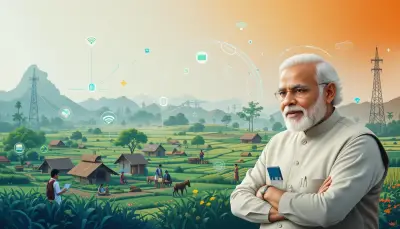📝 HPV Vaccine Drive India: Govt Launches Free Shots for Girls Aged 9–14
In a landmark move for public health, the Indian government has officially launched the HPV Vaccine Drive India, offering free vaccinations to girls aged 9 to 14 across the country. This initiative, aimed at preventing cervical cancer, is being hailed as one of the most significant steps in India’s preventive healthcare history.
The campaign will be implemented through schools, public health centers, and government hospitals, ensuring wide accessibility and maximum outreach — especially in rural and underserved areas.
🧬 What Is HPV and Why Is This Vaccine Important?
Human Papillomavirus (HPV) is one of the most common viral infections and is responsible for over 90% of cervical cancer cases globally. Cervical cancer is the second most common cancer among women in India, claiming tens of thousands of lives every year — many of which are preventable through early vaccination.
The HPV vaccine, when administered before sexual activity begins (typically between ages 9–14), offers lifelong protection against high-risk HPV strains.
🎯 Nationwide Rollout Strategy
Under the HPV Vaccine Drive India, the Health Ministry has partnered with:
State education departments to conduct in-school vaccination camps
Community health workers (ASHA and ANM) for awareness and mobilization
Private hospitals and NGOs for support in urban areas
The vaccine being used is CERVAVAC, India’s first indigenously developed HPV vaccine by the Serum Institute of India, approved by DCGI and WHO.
“We are not just protecting our girls — we are securing their future. This is a proud day for Indian healthcare,” said Union Health Minister Dr. Mansukh Mandaviya.
📍 Target Groups & Schedule
Age Group: Girls aged 9–14 years
Dose Schedule: Two doses, 6 months apart
Mode: Through schools, Anganwadi centers, and government health centers
Goal: To vaccinate 6 crore girls by the end of 2025
📢 Why the HPV Vaccine Drive India Is Trending
It’s the largest government-backed HPV campaign ever conducted in India
It brings cancer prevention into the mainstream conversation
It marks a shift toward preventive healthcare over reactive treatment
Parents, teachers, and health workers are actively promoting awareness on social media using hashtags like #HPVVaccineIndia and #StopCervicalCancer
💬 Public Reaction and Global Praise
Parents across India have welcomed the move, especially in states like Kerala, Maharashtra, and Tamil Nadu where pilot programs had already shown high acceptance.
International health organizations like WHO and UNICEF have lauded India for taking the lead in making HPV vaccines free and accessible at scale — a move that many developing countries still struggle to implement.

🩺 Long-Term Impact
If executed effectively, the HPV Vaccine Drive India could lead to:
Up to 90% reduction in cervical cancer cases over the next 20 years
Lower cancer-related healthcare costs and burden on families
Improved awareness and early diagnosis of other reproductive health issues
India becoming a global model for large-scale preventive health programs
🔚 Final Thoughts
The HPV Vaccine Drive India isn’t just a public health campaign — it’s a life-saving mission. With strong government backing, community involvement, and indigenous vaccine availability, India is setting a powerful example for the world.
As the nation takes this historic step, one thing is clear: the future is healthier, safer, and more empowered for India’s daughters.
❓ Frequently Asked Questions (FAQ) – HPV Vaccine Drive India
✅ 1. What is the HPV Vaccine Drive India?
The HPV Vaccine Drive India is a nationwide government initiative that offers free HPV vaccines to girls aged 9–14 years to prevent cervical cancer. It is being carried out through schools, government hospitals, and public health centers across the country.
✅ 2. What does the HPV vaccine protect against?
The HPV vaccine protects against the Human Papillomavirus (HPV) — a major cause of cervical cancer, as well as other cancers like vaginal, vulvar, and anal cancer. It is most effective when given before exposure to the virus, usually before adolescence.
✅ 3. Who is eligible for the free HPV vaccine in India?
Girls aged 9 to 14 years, enrolled in schools or visiting government health centers, are eligible to receive the vaccine free of cost under this program.
✅ 4. Is the vaccine safe for my child?
Yes. The vaccine being used, CERVAVAC, is approved by the Drug Controller General of India (DCGI) and the World Health Organization (WHO). It is considered safe and effective, with only mild side effects like slight fever or soreness at the injection site.
✅ 5. How many doses are required?
The recommended schedule for girls aged 9–14 is two doses, given 6 months apart. The exact timeline will be coordinated by health workers during the campaign.
✅ 6. Where will the vaccine be administered?
Vaccines will be administered at:
Government and private schools (on scheduled vaccination days)
Anganwadi centers and public health facilities
Mobile vaccination units in rural or remote areas
✅ 7. Do parents need to give consent?
Yes. Schools will typically distribute parental consent forms before administering the vaccine. Health workers may also educate families beforehand and answer any concerns.
✅ 8. Is the vaccine available in private hospitals too?
Yes. While the free government campaign is focused on public institutions, private hospitals also offer HPV vaccines — but usually at a cost. The free drive is aimed at increasing access for all, especially those in low-income or rural communities.
✅ 9. What are the possible side effects?
Most side effects are mild and temporary, including:
Slight pain or swelling at the injection site
Mild fever or headache
Fatigue for a short period
Serious side effects are extremely rare.
✅ 10. Why is this vaccination drive important for India?
India sees over 75,000 new cervical cancer cases every year, and most are preventable. By vaccinating girls early, the government aims to significantly reduce cancer cases, lower treatment costs, and save thousands of lives annually.




